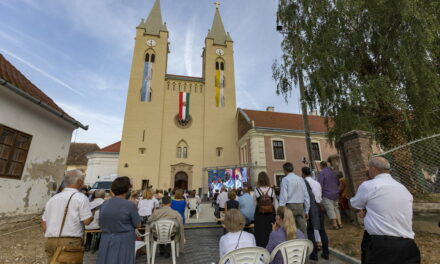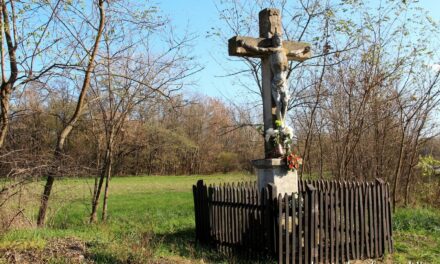The work of the Civil Justice Committee, founded by CÖF-CÖKA, basically involves the presentation of crimes committed during communism that have not yet been investigated and thus remained without consequences. The least explored area is the campaign against Christian priests, nuns, and even ordinary believers. The communists knew well that the community of religious people was the most dangerous for their anti-human utopia, so it is understandable that intimidation and even physical abuse "fit in" with their action against the clerical reaction. Zoltán Osztie's analysis reveals these crimes.
The issue of Christian persecution in Hungary should first be seen and understood from a broader perspective. Our country is not an isolated land either, everything that happens is related to the processes taking place in the world.
Firstly, since the beginning of its existence, the history of the Christian community has been accompanied by persecutions. There was no era when these did not come into force. The Christian church is the church of martyrs. Jesus Christ consciously prepared his disciples for this: if they persecuted me, they will also persecute you, because the servant is not greater than the master, nor the messenger. It is a remarkable fact that eleven of his first twelve disciples proved their loyalty to Jesus, who professed to be the Savior, with the shedding of their blood. The first three centuries are the age of the catacombs, when Christians in Rome were forced into underground tunnels from the persecuting authorities.
Nowadays, the situation is no different, despite the fact that in Europe we can only find out about this through the news, which not many people sympathize with. It is a fact that 13 of our fellow human beings are liquidated every day in the world simply because they are Christians. In total, 340 million people are persecuted for their faith, for which the Christian community is the most persecuted religious group in the world. Four out of every five people persecuted for their faith are Christians. It is worth monitoring, for example, the work of the international organization CitizenGo, which regularly documents developments and specific cases of persecution.
It should fill us with pride that the Government of Hungary has found a way to provide meaningful assistance to those suffering persecution in an exemplary manner and with efficiency. "The latest research on the persecution of Christians in the world reports alarming developments: the number of persecuted and threatened people grows every year and now exceeds 340 million people. In 2019, an average of 13 Christians were murdered every single day simply because of their faith. The Government of Hungary has decided not to stand idly by and not to leave without a word the genocide-level persecution of Christians in each region... Within the framework of the Hungary Helps Program, projects worth a total of more than 21 billion forints were implemented between 2017 and 2021, primarily in the Middle East and sub-Saharan Africa . The amount of the support, including the scholarship program, is nearly HUF 23 billion. In total, more than 170 projects helped people in crisis zones. The realized projects directly contribute to the realization of 13 of the 17 sustainable development goals defined by the UN."
We said all this because when the topic is the persecution of Christians by totalitarian regimes, we are not merely reviving historical events from the past, since history repeats itself. The effect of the horrors of the last century is a history that lives with us: our church and social life would be different if we did not suffer today due to the lack of the lost and our present was not shaped by the proliferation of former (and current) ungodly powers.
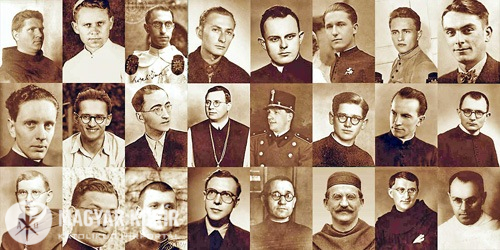
Persecuted priests (photo: Szentkút.hu)
Before we remember the victims of the communist dictatorship in Hungary and think about their rehabilitation, let's relive some events that will help us understand.
In the last century, there were two experiments on a historic scale that tried to arrange the life of societies without God. One was the attempt of the National Socialist dictatorship, which led to Auschwitz, the other was communist socialism, the final destination of which was the Gulag. These are the darkest chapters in the history of mankind, in which hundreds of millions became victims. "Never again," we hear again and again from the speakers at the commemorations, and the genocides continue. There is only one force, organization, and community that has been consistently raising its voice, protesting, opposing dictators, and providing assistance in the spirit of true solidarity for two thousand years: the Catholic Church. In the era we are concerned with, the XX. This was also the case in the 19th century. The most irrefutable proof of this are the two encyclicals (papal declarations) issued by XI. Issued by Pope Pius The first took a stand against "atheistic communism" with the beginning Divini Redemtoris, and branded it a "satanic scourge". And the other one uncovered National Socialism, the first words of which speak volumes in themselves: Mit berennender Sorge. In the 2,000-year history of the papacy, there was no precedent for the head of the church writing his message in the language of the local church, which is particularly affected by the topic. Moreover, the original wording was reformulated into a radical one by Cardinal Eugenio Pacelli Already in these offices, and then XII. As Pope Piusz, he used all means to confront Hitler . At least forty of his 44 speeches on German soil between 1917 and 1929 can be evaluated as opposition to National Socialism.
Communism was not one iota different from National Socialism, since "both ideologies threaten European and Christian culture. Both are materialistic, anti-religious, totalitarian, cruel and militaristic... They take away the sanctity from life, deprive the human being of his dignity, significance and transcendent character, and reduce him to a mere tool of racist domination goals".
, the Soviet dictator Joseph Stalin persecuted or deported about "one and a half million Soviet citizens, of whom 700,000 died. From 1937, the Soviet Union did not have a single bishop in his see. Until 1941, about 350,000 Orthodox believers were persecuted for their faith, including 140,000 former priests. Only in the year of publication of the two mentioned papal encyclicals, in 1937, 150,000 believers were arrested, and 80,000 of them were murdered. Compared to the 1920s, 95% of the churches in the central area of the Soviet Union were closed or destroyed in 1941."
The facts serve as important historical testimony. A system that denies God at its root will sooner than later become a totalitarian dictatorship and become anti-human. The reverse is also true: at the root of every system and state power that leads to genocide lies an ungodly ideology. This was formulated by XI. Pope Piusz on the occasion of his meeting with the German bishops on January 17, 1937, during the preparation of the publication of the aforementioned two encyclicals: "In terms of its purpose and methods, National Socialism is nothing but Bolshevism."
We cannot therefore be at all surprised that the Hungarian adaptation of the two types of dictatorship produced the same symptoms as on the international stage. The same ideological background, the same method to achieve the goal: to obtain unlimited power by liquidating all persons and organizations that stand in the way of success.
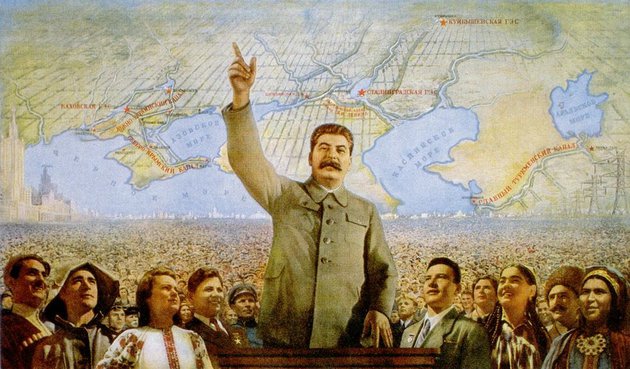
Stalin, alias Dzhugashvili, the great persecutor of Christians (photo: Múltkor)
Before we move on to an overview of domestic events, let me relive a personal experience as a witness of the times. I graduated in 1976 and finished my theological studies in 1982 at the Faculty of Religious Studies of Pázmány Péter Catholic University (at that time the institution was called the Academy of Religious Studies). Three characteristic events showed the atmosphere of the Kádár era known as "goulash communism". On the one hand, we knew those among the minor priests who were among us as established persons with an obvious mission. This was evident from their behavior, they mostly left the seminary (priest training institute) as the years went by, and the later tragic fate of many showed that they were ruined. One of the typical methods of dictatorial systems is to use the chosen as a tool for their own benefit, be they target persons or social groups. "A Moor has done his duty, a Moor can go," says the proverb, that is, if they fulfilled their duty, they were no longer cared for, dismissed, or, in the worst case, silenced.
The second meeting was related to the "peace priest movement". The system formed this organization based on the "divide and conquer" principle, through which it divided the upper and lower clergy and created mistrust among the priests. There was also a network of insiders working here, there were those who had to report, those who were blackmailed with something, or who knew their weaknesses and took advantage of them. Participation in the movement was made compulsory for a time, and those who opposed it were retaliated against. The mass dismissal from the Central Priest Education Institute is memorable. 1959. "At the request of the State Church Affairs Office, the dean of the Academy of Religious Studies and the Central Eye. the rector asked Bishop Hamvas to order with the episcopal faculty the mandatory appearance of the minor priests at the national clergy peace meeting on January 23, 1959, because their absence could have unpleasant consequences for the seminary and for themselves." - January 22, 1959: after the bishops' conference, Endre Hamvas of Csánád announced the "decision" in the presence of the dean, the rector, and the vicar of the Eger chapter, which was presented by one of the prefects during the dinner. However, the minor priests (with the exception of 3) remained in the seminary and did not participate in the peace meeting. According to the document of the ÁEH: Edgár Artner had to retire from the Academy, József Bánk Priest Imre Pap spiritual and György Liptay from the priest training institute were transferred to the countryside, Major Nándor Takács was to be removed (the appointees were also selected); Among the students, the following had to be excluded from the priest training institute and all theology and seminaries in Hungary: Pál Cséfalvay , Imre Nagy VI. years, Gábor Vit Adorjáni , László Arató , József Krichenbaum , István Rózsa , Ferenc Rubint , Antal Szakál , Tibor Székely , István Tabódy V. years, Dénes Kis IV. years old, Balázs Nemes III. years old, Tibor Sulyok and László Takács II. annual students.
Archbishop József Grősz stated in his letter to the rector: "We therefore order that all those who identify themselves with the letter written to the Episcopal Faculty, be sent back to their ordinary by the Lord Rector, who will take care of their further fate". The archbishop attached the statement that was expected from the students, with the comment that the Kalocsa students did not sign it, so he dismissed them. The ordinaries summoned their students to make a statement. The majority took communion with the 14 dismissed comrades, so they were dismissed. The seminary was almost completely empty, in 1958/59. academic year II. semester continued with external students of the Academy and some students of the seminary. Due to the maintenance problems, the presbytery suggested repopulating the seminary and amending the Academy's curriculum. According to them, 40 out of 60 students are suitable for "re-education".
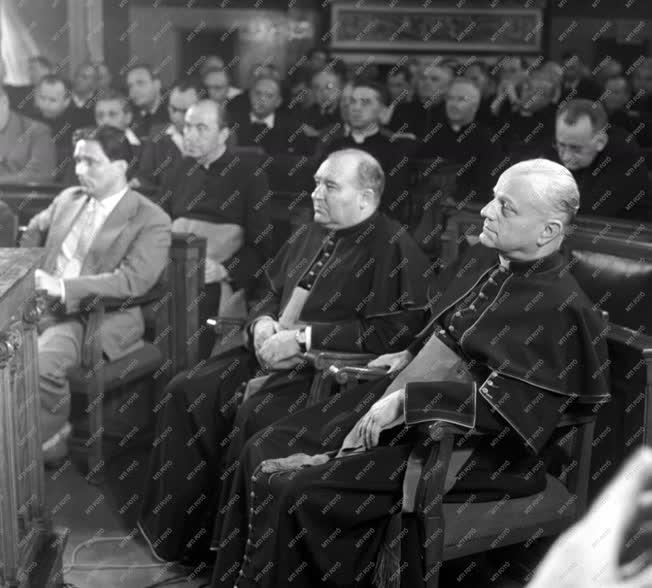
Assembly of peace priests (photo: MTVA archive)
It was interesting to experience the evolution of the dictatorship. The grade two above us received the invitation to the peace assembly by name, the grade one above us only at the grade level, and our grade did not receive such an invitation. The discredited peace priests movement was no longer a suitable tool for achieving the goal of power.
However, the tools of integration and intimidation still worked. The University sent us to a summer German language course in Vienna, where we were hosted by a Catholic youth organization. In order to get a passport, we were assigned to the "Passport Department" on Andrássy út. After waiting for an hour, the interrogation officer came upstairs with a photocopy of my correspondence under his arm - we knew that our letters would be opened - where he led me to a room and showed me a place. Then the softening began: after the ordination, I would definitely like to go to a good parish, they will help me with this, and in return we will meet at intervals. Because the dialogue between the state and the church is important. If there was a conflict between me and the zealous party secretary in a village, we could easily resolve it with the help of good relations, was the suggestion. I said that the dialogue is carried out by the official church and state leaders, and I have no competence in this. And there is no pleasant place, since we owe obedience to the chief pastor, so we go to work where we are given a disposition (position). After it became clear that nothing was going to happen with me, he let me go and I received the passport. After that, they didn't bother me anymore.
(to be continued)
Author: Zoltán Osztie
(Cover image: okatolikus.hu)


